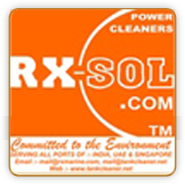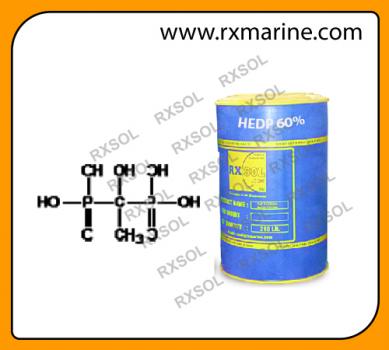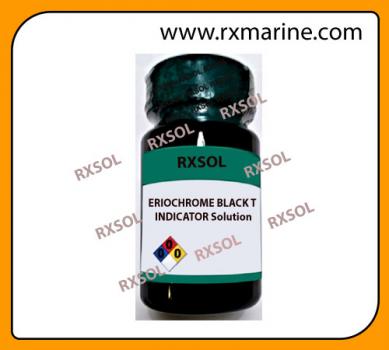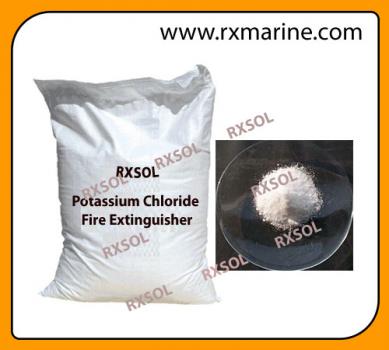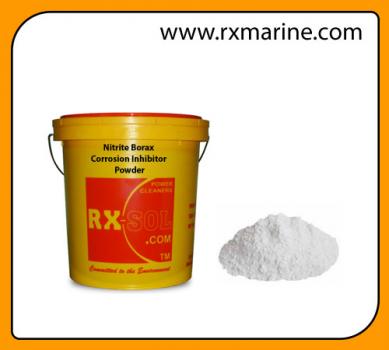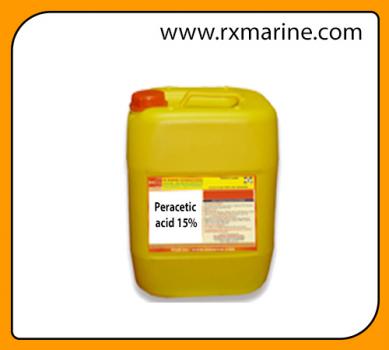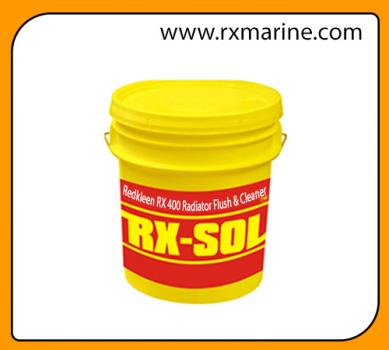Radiator Maintenance chemicals and Radiator Coolant Manufacturer and Supplier :
Radiator Coolant 20% Conc. ::: Part No.- RXSOL-40-4045-025
Suitable to add to the cooling water of internal combustion engines for excellent protection against cavitation and corrosion to all metals and alloys that are used in cooling systems.It is especially appropiate for the use in heavy-duty engines such as those used in trucks, ships and lokomotives.
Coolant Green RXSOL G 93-94 ::: inhibitor concentrate/chemical which is added to the cooling water of internal combustion engines in cases in which the coolant does not need to be protected from freezing. It efforts excellent protection against cavitation and corrosion to all metals Part No.- RXSOL-40-4021-025
Coolant 25 Ltrs ::: Useful in preventing cavitation corrosion in high speed coolant pumps having aluminum housing and impellers. This could aid service life. Part No.- RXSOL-40-4004-025
Coolant Premix Redcool ::: premix coolant which reduces cavitation in areas such as the water pump and surface cavitation in hot spots of the cylinder head. The minimisation of cavitation erosion and pitting of heat rejecting aluminium surfaces (eg. behind exhaust ports) Part No.- RXSOL-40-4043-025
Radiator Condensor Scale Controler:::
Condensor Dispersant Scale Controler (For Radiators, DG - sets, Closed Cooling System) , Specially formulated for SCALE CONTROL . The stable oxide film that is formed by RXSOL-40-4007-020 prevents corrosion caused by electrolytic action between dissimilar metals used in the system. RXSOL-40-4007-020 has been field tested and found to have no detrimental effects on non metallic substances such as seals, glands, packing, hoses, gaskets etc., normally used in the systems. Part No. RXSOL-40-4007-020
Radiator Cleaner ::: This is specially formulated for use as radiator cleaner. Radiator cleaner removes the dirt, grease, scale, grime & solder from the engine cooling system. Radiator cleaner is a powerful cleaning agent not only for the automobile engine but can be used for the steam tube and boiler tube etc. Part No.- RXSOL-16-2697-025
Engine Water Treatment DEWT ::: Multi-functional corrosion inhibitor for protecting recirculating cooling and heating water systems. RXSOL LIQUID EWT treatment is an excellent treatment for diesel engine primary and secondary cooling water. It is also ideally suited for use in chilled water systems because it forms a clear, non-staining solution, which protects the system from corrosion and hard water scale. Part No.- RXSOL-40-4010-025
Engine Parts Washing Solvent ( RXSOL - PWS ) ::: This product provides an economical and effective method for cleaning metal parts while being gentle on the hands. Grease, oil, dirt, sludge, grime, ink, light carbon and similar soils are dissolved with minimal soaking and brushing. Machine shops, garages, factories, industrial repair shops and automobile make-ready facilities will find this product to be an ideal compound for use in their recirculating parts washer units. Part No. RXSOL-10-1727-025
Carbon Remover ::: Concentrated RXSOL-16-1003-025 is most effective product in its category due to its quick and complete action. can be applied for cleaning of highly soiled components. blocks, gear boxes, pistons, rings, valves, atomizers, pipes, burners, coolers, cylinder etc.. Part No.- RXSOL-16-1003-025
Hand Cleaner Paste, Waterless ::: It is a milky white creamy gel containing natural ingredients, moisturisers, surfactants, and powerful dispersing agents. This is a batter substitute to petroleum products & caustic based detergetns which drain the body oil. ONLY 2 TO 5 grams SUFFICIENT tRXSOL-16-1001-001
Email us to get best discounted price for Radiator coolant and Cleaner in India - UAE Middle East - Oman : mail@rxmarine.com





